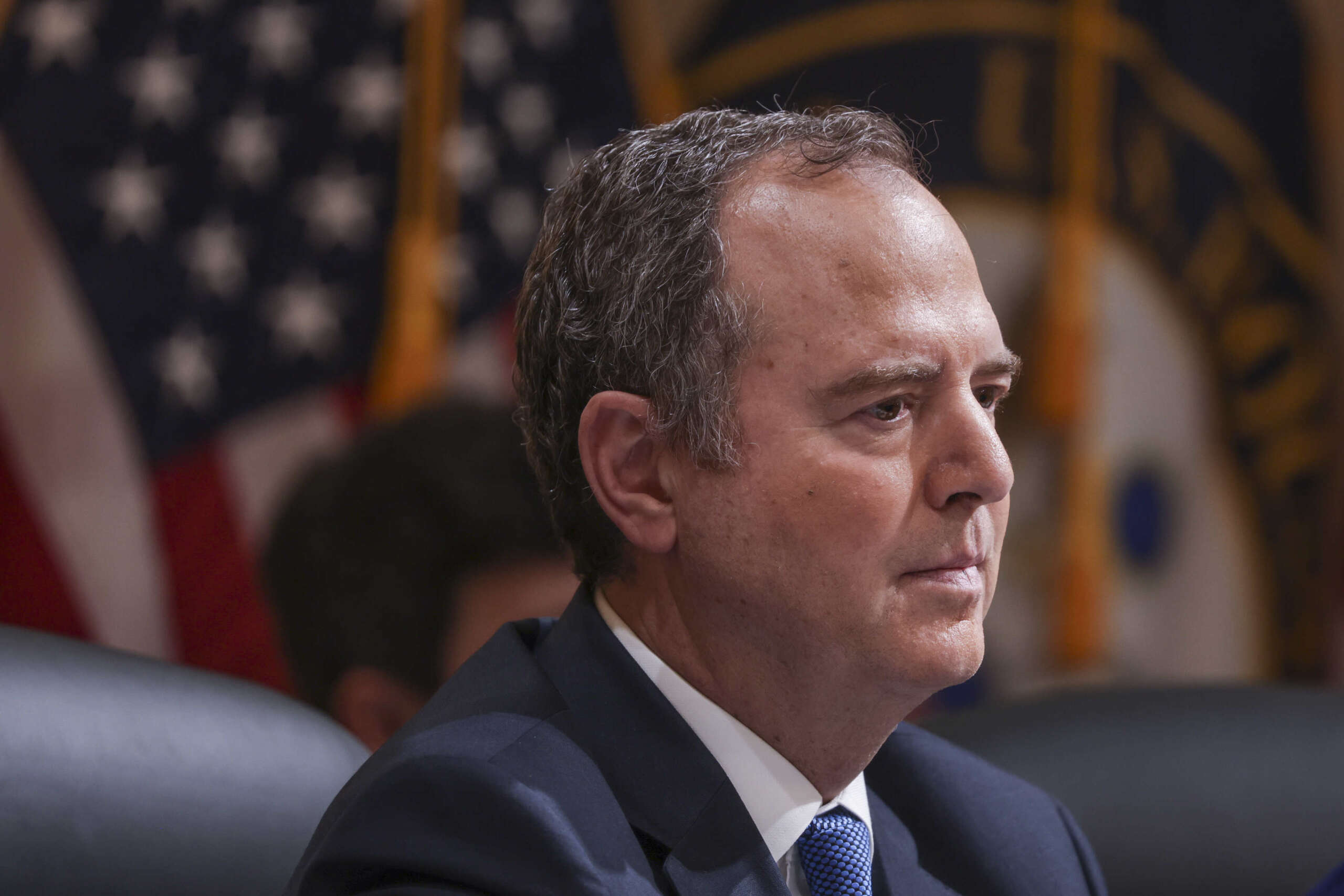Spotlight PA is an independent, nonpartisan, and nonprofit newsroom producing investigative and public-service journalism that holds power to account and drives positive change in Pennsylvania. Sign up for our free newsletters.
HARRISBURG — Pennsylvania House Democrats have clung to their one-vote majority despite a statewide wave of GOP wins that flipped two congressional seats and may have ousted a veteran U.S. senator.
A huge part of the reason is that state Rep. Frank Burns, a conservative Democrat with a district in the middle of an overwhelmingly Donald Trump-supporting region, held on to his seat.
In this era of Pennsylvania politics, Burns, of Cambria County, is one of the most important members of the state House — both during elections and when it comes to whipping votes in a narrowly divided chamber.
He rarely gives interviews. But in a statement on his victory, Burns said he was “humbled” by his constituents’ support and set out something of a political mission statement.
“This election was a win for Cambria County people and another humiliating defeat for the outsiders and local business elites who funded and orchestrated an incredibly divisive, dishonest and bitter campaign,” he wrote.
“These folks think they can treat Cambria County like it is their own private country club and cash register — but I won’t stop fighting them. We must continue to guard against those who are actively working to exploit Cambria County people for their own personal gain.”
A member of the state House since 2009, Burns has carved out a specific, and increasingly rare, political niche.
When he first entered the chamber, Burns’ seat was surrounded by other Democratic districts, which were held by members who had decades of experience creating coalitions that included union coal miners and steel and other industrial workers. Maintaining those supporters meant casting a mix of pro-labor and socially conservative votes on the state House floor.
Earlier in his tenure, that approach was relatively common within the party. In 2011, Burns was one of dozens of Democrats who supported a law that provided legal protection for a person who, for instance, shoots an intruder in their home who they believe is a threat. That same year, a similar group voted for a law increasing restrictions on abortion clinics.
Burns still casts these kinds of votes. But as Republicans have increasingly flipped rural Democratic seats, his legislative record within his party has gone from common to unusual.
“Looking at the large number of rural seats from the Susquehanna River to Youngstown, Ohio, Frank Burns is the last of the Mohicans,” said Bill DeWeese, a former Democratic House speaker who represented another rural Western Pennsylvania district.
In the most recent session, Burns voted against bills that would create universal background checks for firearm purchases, add LGBTQ nondiscrimination protections to state law, and shield doctors and patients from out-of-state abortion prosecutions. All of these measures passed, but didn’t advance out of the GOP-controlled state Senate.
DeWeese credited state House Democratic leadership for advancing the party’s agenda without Burns’ vote. They did so by getting suburban Republicans on board, which allowed Burns to cast a no when “everyone in that room on both sides of the aisle knew he could not survive certain votes.”
Those no votes were combined with some targeted economic populism.
For instance, Burns sponsored a new law that allows the children of military families based in Pennsylvania to get in-state tuition even if they are redeployed to another location.
He also voted for parts of House Democrats’ economic agenda, including budget deals that put billions of dollars into public education, an unsuccessful effort for new railroad regulations after the East Palestine train wreck, and a bill that would have increased utility consumer protections.
Burns has made these political calculations during a 16-year span in which his district and his region have shifted rapidly.
Cambria County, which includes the city of Johnstown, was formerly a hub of the American steel industry and underwent rapid population loss in the 1980s as major manufacturers in the region collapsed.
Cambria was at the heart of Pennsylvania’s 20th century Democratic coalition, which lasted through much of the county’s industrial decline. In 1986, for instance, when Democrat Bob Casey Sr. won the governorship, he carried Cambria County by nearly 40 percentage points.
But by 2008, when Burns won his seat, that relationship had waned. In the election that brought Burns to the state House, former President Barack Obama won Cambria County by less than a point.
This year, with the county’s votes almost fully tabulated after problems with voting machines on Election Day, it appears that Trump carried Cambria by nearly 40 percentage points.
So how did Burns hang on?
Part of the answer has to do with his district.
When a legislative commission (along with a nonpolitical tiebreaker) redrew Pennsylvania’s House and Senate maps a few years ago, they prioritized making districts that reflected the extremely split political leanings of Pennsylvanians.
This led to a lot of districts that were solidly Republican or Democratic, and a relatively small number of swing districts.
Burns’s 72nd Legislative District should, by most measures, fall into the safe Republican category, but it has a few features that make it possible for a politician like Burns to hold it. It includes Johnstown which, while it has swung right over the years, has a handful of Democratic-voting precincts. It also includes municipalities that, while not necessarily blue, are less conservative than the rest of the county — like Ebensburg, the county seat.
It’s still a tough district for Democrats to crack. But another key element of Burns’s political approach explains why he can still do it: He knows his voters.
Social conservatism was a big part of his 2024 reelection bid. His campaign website included promises to fight for health care and public schools, but also had a vow to stand for “conservative values,” including “a love for God, Country, and our Constitutional Rights.”
DeWeese also credited Burns with running “nuts and bolts” political campaigns focused on door-knocking and appearing at every possible community event. That approach has insulated him from national political trends for over 16 years.
The former speaker summarized the approach as having “a good handshake, eyeball-to-eyeball sincerity, and his moderate voting record.”
On top of that, the race was the most expensive in the state House this year, according to preelection campaign finance reports.
Commonwealth Leaders Fund, a political action committee bankrolled almost exclusively by Philadelphia-area billionaire Jeff Yass, sank hundreds of thousands of dollars into ads backing Burns’ Republican opponent, Amy Bradley. Burns himself received millions from the Pennsylvania House Democratic Campaign Committee.
He used the money to fund ads accusing Bradley, a former local chamber of commerce executive, of damaging a local hospital and for being “bought out” by Yass. Burns also ran spots saying he had voted to cut taxes and that “in Cambria County, we believe in common sense, not woke politics.”
Even Republicans who would love to capture his seat offer Burns begrudging respect for knowing his district well.
Elizabeth Havey, a longtime political operative who serves as the secretary of the Pennsylvania GOP, told Spotlight PA, “I think Frank Burns’ seat, if he ever retires, will go Republican.”
“That’s a testament to him,” she added. “He knew people. There were signs in people’s yards, I’m told — Trump signs, and a Frank Burns sign next to them.”
BEFORE YOU GO… If you learned something from this article, pay it forward and contribute to Spotlight PA at spotlightpa.org/donate. Spotlight PA is funded by foundations and readers like you who are committed to accountability journalism that gets results.
Categories:
Election | News | Pennsylvania | Politics Election | Spotlight PA | Top Stories















